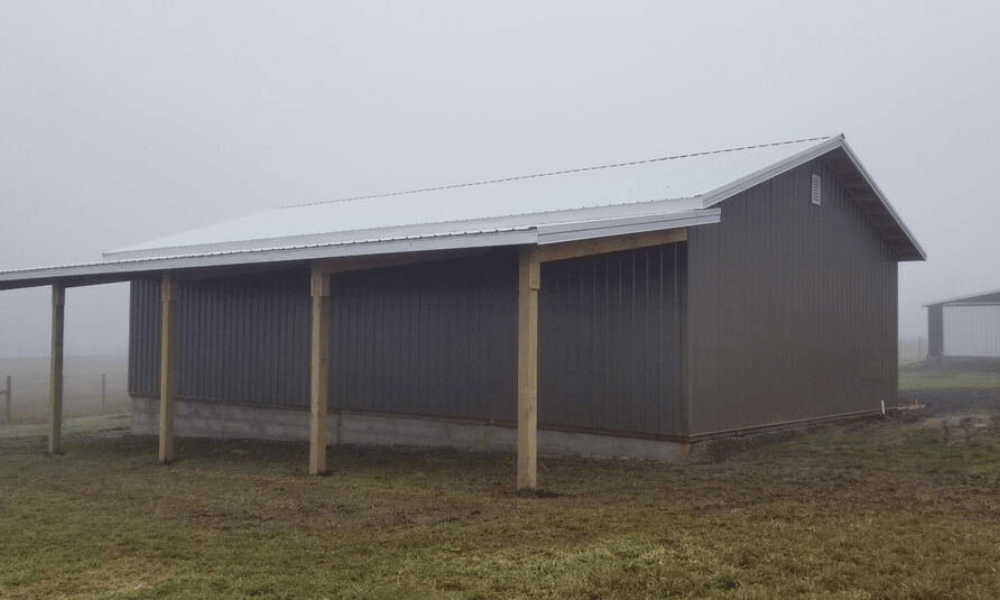Creating safe and accessible entryways in your pole barn is not just a matter of aesthetics; it’s about ensuring functionality and safety for everyone who uses the space. Whether your pole building serves as a workshop, storage area, or even an animal shelter, the entryway plays a critical role in how effectively the structure can serve its purpose.
In this extensive article, we’ll dive deep into how to design and construct entryways that are not only visually appealing but also secure and easy to navigate. We will cover various aspects such as materials, designs, safety features, accessibility standards, and maintenance tips. So grab a cup of coffee and let’s get started!
Understanding Pole Buildings
What Are Pole Buildings?
Pole buildings are structures with post-frame construction, characterized by vertical posts that support the roof. They are favored for their versatility, cost-effectiveness, and ease of construction. These buildings can range from barns to garages and workshops.
Why Choose Pole Buildings?
Pole buildings offer several advantages:
- Cost-Effectiveness: Generally cheaper than traditional framing methods. Versatility: Can be used for various applications. Quick Construction: Faster to build compared to conventional buildings.
Designing an Entryway for Your Pole Barn
Evaluating Your Needs
Before diving into the specifics of entryway design, consider your primary needs:
- Will large equipment need access? Is foot traffic more common than vehicle traffic? Do you need additional security features?
Aesthetic Considerations
While functionality is key, don’t ignore aesthetics. Aim for an entryway that complements the overall design of your pole barn. Use colors and materials that harmonize with existing elements.
Materials for Your Entryway
Choosing the Right Materials
Durability is paramount when selecting materials for your entryway:
- Wood: Offers a rustic look but may require more maintenance. Metal: Durable and low-maintenance; great for high-traffic areas. Vinyl: Resistant to rot and pests; available in various styles.
Pros and Cons of Each Material
| Material | Pros | Cons | |----------|------|------| | Wood | Aesthetic appeal | Requires maintenance | | Metal | Durability | Can be noisy | | Vinyl | Low-maintenance | Less aesthetic options |
How to Create Safe and Accessible Entryways in Your Pole Barn
Creating safe entryways involves careful planning. Ensure the following:
Adequate Width and Height
Entryways should accommodate vehicles or equipment without difficulty. Standard door widths range from 36 inches (for pedestrians) to 10 feet (for large machinery).
Level Ground
Ensure that the ground leading up to your entryway is level. Uneven surfaces can lead to accidents.
Non-Slip Surfaces
Consider using non-slip flooring or mats at the entrance points to reduce fall risks.
Safety Features for Your Entryway
Lighting Considerations
Adequate lighting is essential for safety:
- Install motion sensor lights. Use bright LED lights near entrances.
Handrails and Ramps
For accessibility:
- Install handrails on either side of steps. Build ramps where necessary for wheelchair access.
Accessibility Standards
Understanding ADA Compliance
The Americans with Disabilities https://canvas.instructure.com/eportfolios/3567350/home/space-and-functionality-pole-buildings-vs-traditional-garages Act (ADA) sets forth guidelines that ensure accessibility:
Doors should be wide enough (at least 32 inches). Thresholds should be no higher than ½ inch. Ramps must have a slope ratio of 1:12.Local Regulations
Always check local building codes regarding accessibility standards specific to your area.
Maintenance Tips for Entryways
Regular Inspections
Conduct regular inspections of doors, ramps, railings, etc., looking out for wear or damage.
Cleaning Protocols
Keep surfaces clean to avoid slips—especially during icy weather conditions.
Creating an Inviting Atmosphere
Landscaping Around Entryways
Enhance curb appeal by incorporating landscaping elements such as flowers or decorative rocks near the entryway.
Incorporating Technology
Automatic Door Openers
Consider installing automatic door openers which can enhance accessibility—particularly useful if hands are full.
Common Mistakes When Designing Entryways
Underestimating Size Requirements
Not accounting for larger vehicles can lead to frustration down the line—always overestimate when designing an entryway!
FAQs About Safe and Accessible Entryways in Pole Barns
What width should my pole barn doors be?- For standard pedestrian doors, aim for at least 36 inches wide; vehicle doors should be at least 10 feet wide depending on what you're accommodating.
- Ensure door width meets minimum requirements (32 inches), install ramps with correct slopes, and adhere to height restrictions on thresholds.
- Motion sensor LED lights provide excellent illumination while conserving energy.
- Textured vinyl flooring or rubber mats specifically designed for wet areas can significantly reduce slip hazards.
- Regularly inspect hinges on doors, clean surfaces regularly, check lighting fixtures, and clear debris from ramps.
- Absolutely! Many companies specialize in custom designs tailored specifically to your needs—don’t hesitate to explore creative options!
Conclusion
In conclusion, creating safe and accessible entryways in your pole barn involves meticulous planning that combines functionality with aesthetic appeal. By considering factors like material choice, safety features, compliance with standards like ADA regulations, regular maintenance practices, and innovative technologies like automatic door openers—you can ensure that your pole building remains welcoming yet secure for all users.

Remember that the entrance sets the tone for what lies beyond it; make it count! With thoughtful design choices backed by expert guidance outlined herein, you can create an inviting atmosphere where both people—and projects—can thrive seamlessly!